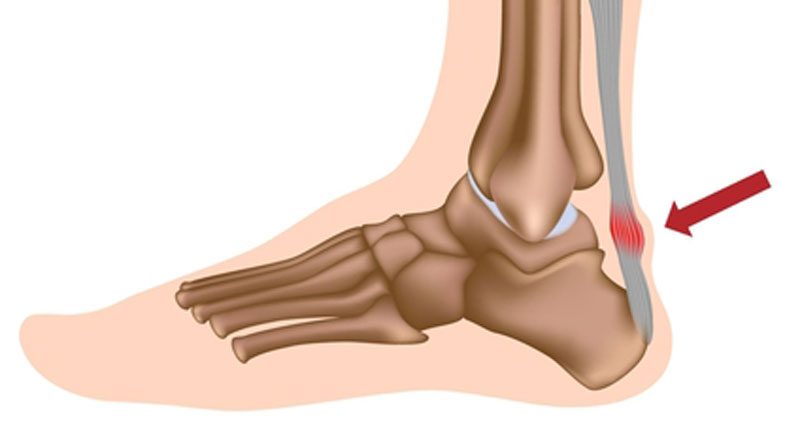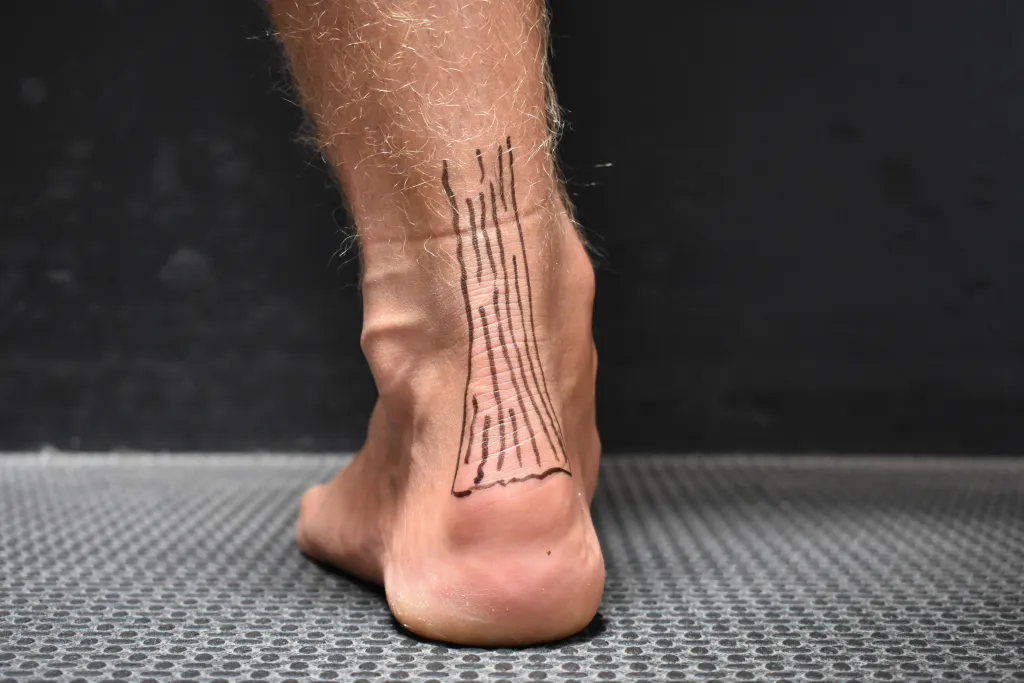Achilles tendonitis/ Insertional Tendinopathy, also known as Achilles tendinitis, is a condition characterized by inflammation and irritation of the Achilles tendon, which is the large tendon that connects the calf muscles to the heel bone. It commonly occurs in athletes and individuals who engage in repetitive activities that put stress on the tendon, such as running, jumping, or playing sports.
Symptoms of Achilles tendonitis typically include pain and stiffness along the back of the leg near the heel. The pain may worsen with activity and improve with rest. There might be swelling or tenderness around the affected area, and in some cases, a noticeable thickening of the tendon.
The main causes of Achilles tendonitis include:
- Overuse: Engaging in repetitive activities that strain the Achilles tendon without giving it enough time to recover can lead to inflammation and injury.
- Tight calf muscles: When the calf muscles are tight, they can put increased stress on the Achilles tendon during physical activity.
- Improper footwear: Wearing shoes that do not provide adequate support or cushioning for the feet can contribute to the development of Achilles tendonitis.
- Sudden increase in physical activity: A rapid escalation in intensity, duration, or frequency of exercise or sports participation can strain the Achilles tendon and lead to injury.
To manage Achilles tendonitis, it is important to rest and avoid activities that aggravate the condition. Applying ice to the affected area can help reduce pain and inflammation. Nonsteroidal anti-inflammatory drugs (NSAIDs) may be recommended by a healthcare professional to alleviate pain and reduce swelling.
Physical therapy exercises are often prescribed to stretch and strengthen the calf muscles and Achilles tendon, promoting healing and preventing future injuries. In severe cases or when conservative treatments do not provide relief, a healthcare professional may consider other interventions, such as immobilization with a cast or walking boot, corticosteroid injections, or in rare cases, surgical intervention.
Prevention of Achilles tendonitis involves gradually increasing the intensity and duration of physical activity, wearing appropriate footwear that provides proper support, and maintaining flexibility and strength in the calf muscles through regular stretching and strengthening exercises.
If you suspect you have Achilles tendonitis or are experiencing symptoms, it is advisable to consult with a healthcare professional for an accurate diagnosis and appropriate treatment recommendations.



